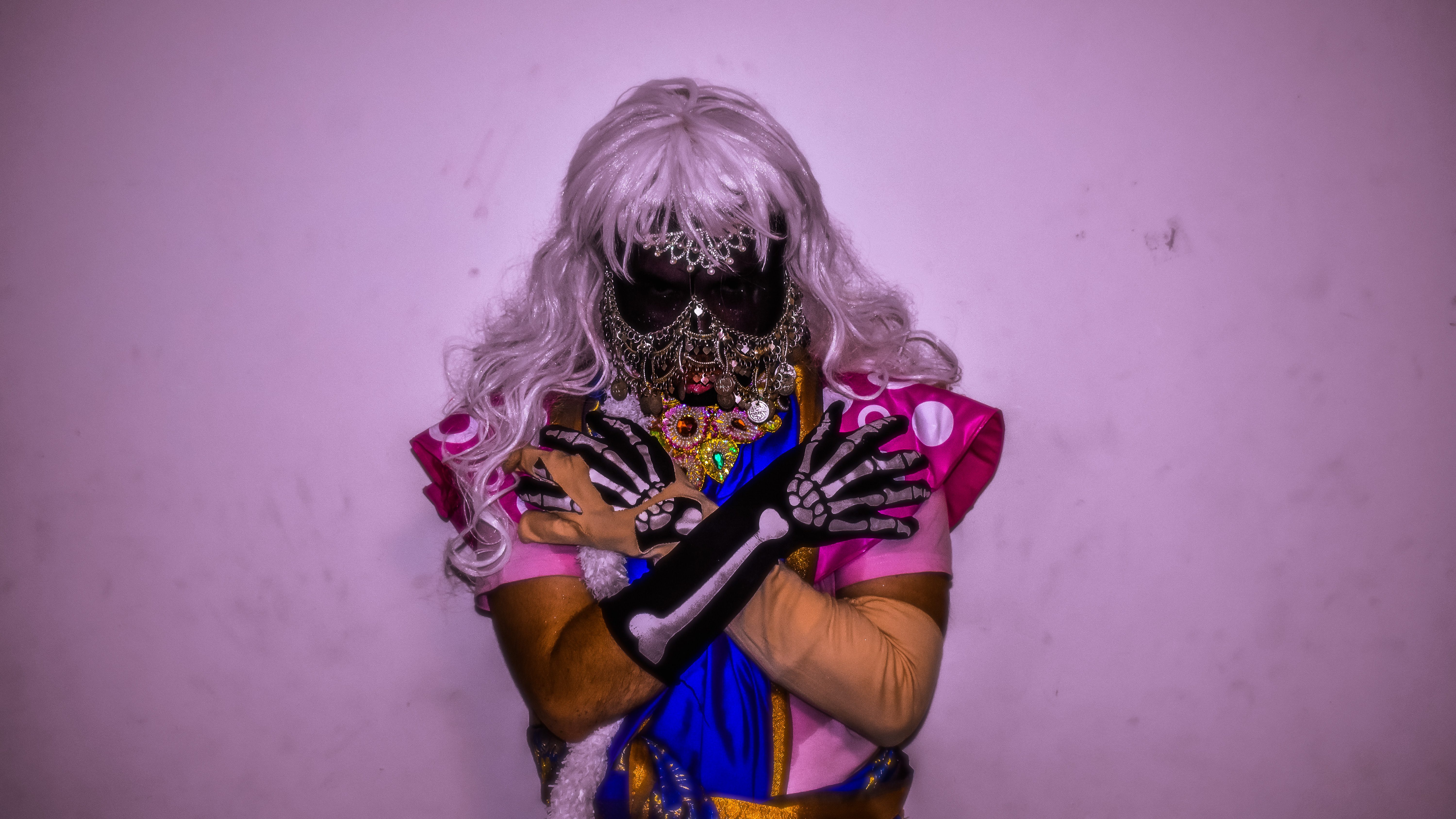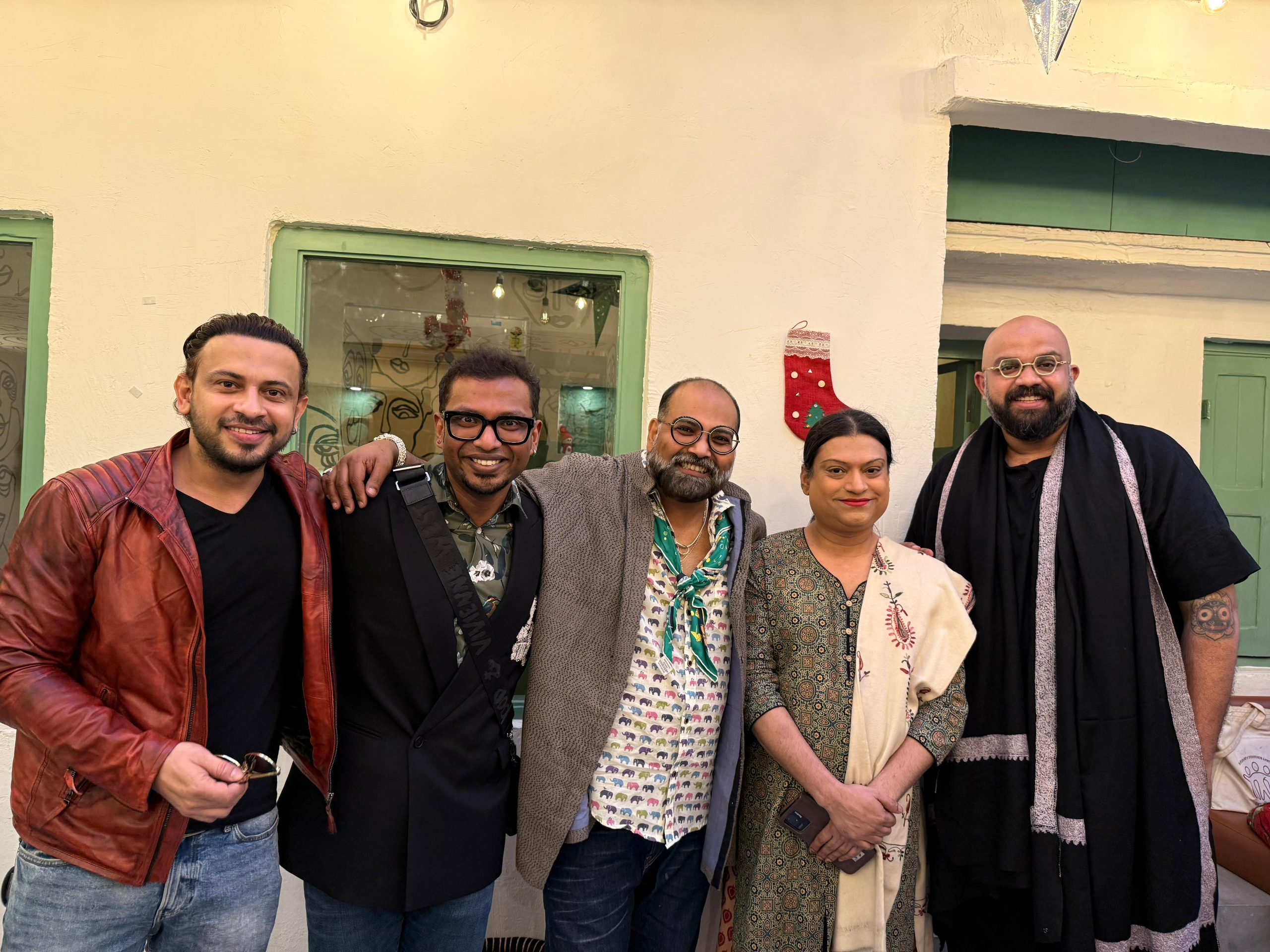When words do not do justice to his cause, Patruni Chidananda Sastry takes up his favourite art form—dance, to speak volumes about sexual and gender orientation, the boundaries of labels, and sex education. Here, you will find an interview with the magnificent performer.
Tell us a little about yourself!
Patruni Chidananda Sastry: I am 27 years of age from Kharagpur, a small town in West Bengal, and I am currently settled in Hyderabad. My initial inclination to dance started after watching the movie ‘Padayappan’, where the heroine dances in rage when she is rejected by the hero. Being only 5 years old then, I thought that if you need to show anger, you must dance. My father found this sapling growing within me, and he encouraged me to pursue Bharatanatyam under Kalamandalam Venkit in Kolkata. I have been learning Bharatanatyam for 15 years now, and have also learnt the nuances of Kuchipudi and Odissi.
My initial inclination to dance started after watching the movie ‘Padayappan’, where the heroine dances in rage when she is rejected by the hero. Being only 5 years old then, I thought that if you need to show anger, you must dance.
Apart from performing the regular repertoire, my curiosity led me to research and learn about the Expressionism movement as a part of World War II and, accordingly, expressionist dance. I worked on creating a similar format of Indian Expressionism with the vocabulary of Indian dance. Indian Expressionism does not have a fixed format and uses surreal objects as part of the performance. In Indian traditional dance, props are avoided and the body becomes the prop. In expressionism, an external element, a prop, becomes part of the dancing body. Expressionism helps me in stepping out of the sacred, traditional boundaries to something provoking and challenging. I used this as a weapon for showcasing my activism through dance.

How has dance allowed you to explore your gender orientation and sexuality?
Patruni Chidananda Sastry: Dance is one of the categories of art which is used as a medium for gender expression. Every girl in a South Indian household is pushed to learn dance and boys are pushed to learn sports or musical instruments. This binary gave me the trigger point to use dance to explore gender. When I went to perform for the first time in the Queer and Allies Film Festival, I heard names such as “asexuality”, pansexuality”, etc. for the first time. As new names popped up, I was getting confused. It made me wonder, “how will a lay man accept his orientation when he cannot even understand it in the first place?”.
Using expressionism, I started analysing each orientation with dance and how we can show it in a solo format. I obtained a firmer grasp on the meaning of sexual orientation, and presented a piece each time there was a Queer event happening. This also helped me build my triplet work–Unboxing the Gender, Box of Gender Expression, and Out of the Box–where I worked on analysing how gender is seen by an individual, by society, and beyond. Being a male dancer, I was always called a homosexual for my preferred gender expression (dance), and I wanted those people to understand that a person can be beyond one or more labels, and that gender and sexuality are infinite. I use my “bhramhastra” dance to explain the same.
Being a male dancer, I was always called a homosexual for my preferred gender expression (dance), and I wanted those people to understand that a person can be beyond one or more labels, and that gender and sexuality are infinite.
In what ways did you use dance as a tool for your activism?
Patruni Chidananda Sastry: As I started putting up performances surrounding social subjects, I could recognise more problems which needed to be addressed. I used performance art as a weapon to showcase my take on an array of issues. My first performance art piece was called “Strip Tease”, where I stripped off my clothes one after another, to bring to light the #MetToo movement, especially within the classical and art industry. My second performance was called “What’s My Color?”, an outcry about the number of labels within the LGBTQIA+, and the lack of effort to create awareness about alternative sexualities. I also performed a piece called “Bond-Haze”, a protest against the death of a gay child from Chennai, who was bullied by his classmates. My upcoming performance, “Four-play”, is a presentation which asks for freedom of love and is a call against moral policing.
Tell us more about your performance at the Queer and Allies Film Festival and the impact it made on the audience.
Patruni Chidananda Sastry: The Queer and Allies Festivals were some of my major break-throughs, as the people were part of the LGBTQIA+ community, especially young kids who are either understanding or exploring their sexualities. I used to present topics of gender and sexuality which made them understand their sexual/gender identity, and encouraged them to seek more information. For example, they learnt that they aren’t “different” when it comes to sexuality, and my performances served as a mirror. I had experiences where people came to me and shared their stories and experiences. I feel fortunate because those experiences contributed to the building of my craft.
How did you use dance to provide sex education at a time when it was taboo in school?
Patruni Chidananda Sastry: The word “sex” is taboo in India. Some use it derogatorily. But we are not born out of a Baba’s boon, are we? Even after the Union government had passed the Act of mandating sexual education in schools and colleges, it was never discussed, the major reason being the teachers’ hesitation in using certain words. I thought, “Why can’t we show knowledge of sexual education via movement, dance, without uttering a word?”. That was the initial thought.
Also read: Chhau Nritya—Breaking The Glass Ceilings Within Dance Forms
I presented a performance called “Touch Me Not” which talks about ‘good’ and ‘bad’ touch. I gave a presentation called “Nirod” on safe sex, and “Kavach” on women’s contraceptives. I presented “Mood Swings”, a performance piece on Premenstrual Syndrome (PMS) for Menstrual Festival Hyderabad, and “Patra” on the usage of menstruation cups for Hyderabad Literature Festival 2019. My major upcoming projects are “STD”, a performance on sexually transmitted diseases, and “Qamasutra”, a queer telling of Kamasutra.
Can you tell us what Tranimal Drag is?
But, unlike traditional drag, in which performers are praised for their elegance and beauty, I was attracted to tranimal style–also called “drag terrorism”. Tranimal drag is the drag of poor, available drag queens.
Patruni Chidananda Sastry: While learning performance art and talking about drag, I understood that drag is itself a performance art. This curiosity helped me explore drag further. But, unlike traditional drag, in which performers are praised for their elegance and beauty, I was attracted to tranimal style–also called “drag terrorism”. Tranimal drag is the drag of poor, available drag queens. It does not throw money on clothes and cosmetics, and works on only one belief: “this will do”. Tranimal drag performers make outfits themselves with available trash. They look vigorous, and they momentarily erase beauty and gender norms. When I perform tranimal I am liberated, I become the drag queen who doesn’t wear heels, but performs bare-footed for the less privileged community that I try to remind myself of.

Do you think your art has made a positive impact on those who have been witness to it?
Patruni Chidananda Sastry: My art is easy, accessible, and available for the people, which has made a connection with the audience. People weep through the performances time and again. Sometimes they share their personal stories. Because of art, even activism becomes reachable and simple.
You mentioned that gender is not an integral part of an artist’s psychological autonomy. Could you please elaborate on this?
Patruni Chidananda Sastry: I feel an artist’s body is always asexual. It’s the mind, heart and assigned biology which makes them explore sexuality. An artist’s art is asexual, it is on him/her to mould it into any gender. A body on stage is just a non-gendered body of a performer, a machine which can make itself anything on stage: any gender, living or non-living, fictitious or real. Hence, gender is not a part of an artist’s autonomy.
Also read: Presenting The Gabrielle Show – Chennai’s First Ever Drag Show!
Patruni Chidananda Sastry’s journey is one which has inspired many to delve into an endless exploration of sexuality. His activism has educated those who would be reluctant to engage in any conversation about sex and sexuality through unapologetic performances which did not need spoken words to impart knowledge. Sastry has successfully reached the perfect amalgamation of creativity and information, and continues to be a fierce activist through his art.
All pictures are provided by Patruni Chidananda Sastry
About the author(s)
Manasi is a Gender & Sexuality campaigner at Jhatkaa.org. She is the former Digital Editor at Feminism in India and a researcher in the field of women and work. She hopes to keep learning and unlearning about feminism and intersectionality, and to create meaningful impact through her work.




